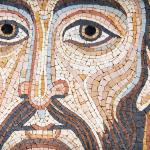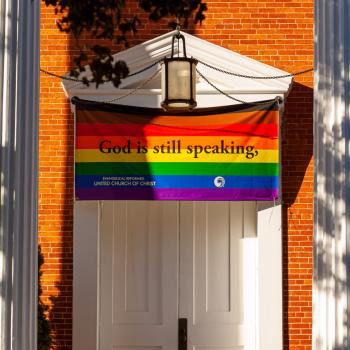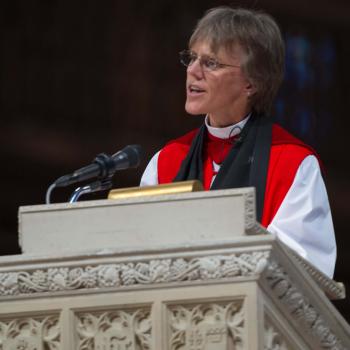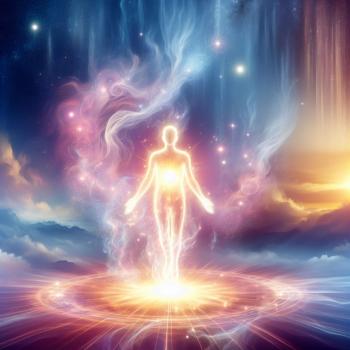In this series I have argued there are features that are fundamental to all human beings. These features apply across temporal and cultural boundaries. They are innate marks that bind us all together and give evidence of a common humanity. Further, some of these features: our fear of the unknown, the burden of guilt we bear and our desire for recognition, give rise to cultural stories or narratives. Some of these narratives tell us something true about ourselves. They speak of our common humanity.
Contrary to critical theories, these true stories are not told merely to keep some in positions of privilege and others in a place of oppression (although other stories certainly are about that). Instead, these cultural narratives are aimed at truth, and, being aimed at truth they cry out for an overarching story that binds them together. They call for a true “meta-narrative.” This meta-narrative or story explains, or at least gives some explanation, as to why we share these features and what we are to do about them. The meta-story functions for everyone, regardless of who we are or where we come from.
One truth of this overarching story, then, is that human beings are more than just their social location or biological make-up. We cannot be reduced to social identity or the sum of our DNA. Instead, this story suggests our identity is fundamentally sacred, and it is fundamentally sacred because God has made us in His image. It is a compelling story.
In this final entry, I will look at one more feature that is ubiquitous to all people. This feature further demonstrates why we cannot simply reconstruct who we are by a sheer act of the will. We must reconstruct our selves and our societies in accordance with what we actually are. And, if one thing is clear it is this: human beings are, at bottom, creatures who worship.
The desire to worship, adore and devote oneself to something beyond oneself, to something higher than oneself, is an inescapable fact. It is the central feature of our shared, sacred humanity. It is the feature that not only drives individual persons but that facilitates the rise and fall of nations and spurs the creation and decline of culture itself.
The Choir That Sings Psalms To The Earth
In 2009 I worked in a TOC (Tactical Operations Center) at Fort Bragg, NC for the XVIII ABN Corps. Part of my responsibility at that time was to prepare global briefs for the Commanding General. This “CG-brief” entailed little more than watching the news and preparing PowerPoint slides on very, very broad issues. It was a job no intelligence analyst really wanted to do but that most had to do at some point in their career.
I recall one December morning sitting in the TOC watching various news sources. That day, most of the major networks had live coverage of the Copenhagen Conference on Climate Change. The majority of the world’s political and economic leaders, to include the newly elected president Barack Obama, attended the conference. While I did not get into the details of the conference (this was, after all, a brief for a military general), something struck me in a very unsettling way about its opening ceremonies.
The uncanny nature of the ceremony lay in the deeply religious form it assumed. The presentation was not aimed at the purely logical nor intended solely to engage a strongly “left-brained” audience. This forum was no meeting of staunch scientific rationalists in white lab coats, although certainly there were some of those. The opening rather suggested this would be far more than a mere scientific symposium. Minimally, the inaugural ceremony was like an act of worship, even if the remainder of the conference was more pedantic in nature. Nevertheless, like any church service, worship preceded the more sober dialogue which followed.
One can watch the video oneself to see this ceremonial adoration. The conference opens with what looks like a Protestant choir, the Danish girls choir, on its knees, prostrate before Mother Earth. They hold their hands, cupped in prayer. An opening invocation exhorts the global audience to do good works unto nature (not nature’s Creator). The simplest good work to do in propitiation to the Earth is “to plant a tree.” This also seems to be the title of the song that follows.
The invocation moves seamlessly into what can only be called a Psalm to the creation, a religious hymn that both exalts the Earth and, again, exhorts its inhabitants to moral action. Even popular religious phrases like “all things great and small” are re-appropriated, put into a new, humanistic context. This appropriation seems to make man himself out to be both creator and sustainer of the world he inhabitants. The hymn reaches its crescendo as the girls slowly raise their arms in the traditional Christian orans posture. It seems the choreographers intended the gesture to connote the sacramental nature of this political endeavor to save the planet. The particular symbol chosen to represent the earthen whole to which the hymn is sung, is, of course, the tree.
Another video, also shown at the opening of the conference, is less worshipful, but nevertheless plays off of the religious sensibilities of the audience. It admonishes us to moral action through the threat of an immanentized hell–a literal hell on earth. To prevent this hell, world leaders must act as the saviors of mankind as political actors replace the priest in their mediating role between man and man’s world. Roughly 100 years earlier, G.K. Chesterton quipped about this form of false spirituality:
Idolatry is committed, not merely by setting up false gods, but also by setting up false devils; by making men afraid of war or alcohol, or economic law, when they should be afraid of spiritual corruption and cowardice.
G.K. Chesterton
There was nothing in the Copenhagen opening ceremonies that spoke to the reality of our own spiritual corruption or the destination of our eternal souls. The Earth is eternal but we are not. Nevertheless, those orchestrating the opening ceremonies made climate change a very real devil to their global audience. The devils within our own hearts, however, went more or less unaddressed.
Universal Feature #4: We All Must Worship
Chesterton also summed up this central feature of our human nature, that man is a worshiping creature, when he said:
When men choose not to believe in God, they do not thereafter believe in nothing, they then become capable of believing in anything.
It should be no surprise that even after 200+ years of scientific progress and “enlightened” rationalism that a truly “secular” order has not been achieved. That we will worship something, both individually and corporately, is inevitable. Our identity as sacred creatures drives us to seek out something to make like ourselves, something to sacralize. That the earth is, and always has been, one of the main candidates for us to make sacred is an incontestable fact of history.
As such, there are only two possible kinds of things we can worship. Paul addresses this in his letter to the Romans, chapter 1:18-32, when he speaks of man’s great exchange. In man’s suppression of the truth in unrighteousness he exchanges something in the creation for the Creator itself. Either man worships the creation or the Creator, there is no third thing. Moreover, this exchange, once dismissed as mythological nonsense by the strict rationalists, now pervades the entire conversation on issues like climate change.
In a recent interview, theologian Cal Beisner, who specializes in climate change and climate change policy, points out how explicit this conflation of Creator with creature is within the environmentalist community. Little did I know before the interview that Beisner had actually attended the 2009 Copenhagen summit I saw on TV, witnessing the opening ceremonies and their inherently religious content. In Beisner’s own words, “it was wild!”
Beisner, who runs the Cornwall Alliance For the Stewardship of Creation, clarifies that the climate change ideology and its accompanying political advocacy is hardly a movement lead by cold, hard rationalists. The contemporary climate change project is no child of the Enlightenment, what with its metaphysical and religious skepticism. Instead, the movement openly embraces the worship of “the old gods” of both East and West. It is a fundamentally religious project, one that provides a concrete example of Paul’s warning about the great exchange.
One can easily produce other examples of worship connected to the climate change movement. This conflation of creature and Creator was most striking when it was witnessed recently within the confines of the Roman Catholic Church. During the 2019 Amazon Synod at the Vatican, sacred trees were planted in the Vatican gardens, idolatrous statues prayed to in a Catholic church and sacred dirt placed on the altar of sacrifice next to the Eucharistic elements. Could there be any more explicit conflation of creature with Creator for a Roman Catholic as when the dirt that was made through Jesus Christ is placed next to His transubstantiated body and blood, as if they were ontologically equivalent!?
While the return to earth worship and pagan gods seems inevitable, there are other things that human beings could worship. Human reason itself was, for a time, elevated to this position of primacy. Unfortunately, for many dyed-in-the-wool modernists this is no longer the case. Scientism is waning. If anything, Scientism merely provided the seedbed for the new (or actually quite old) religions to (re)emerge. The problem for reason was always its abstractness. Inevitably man must worship something concrete because man himself is concrete. Physicists and their ancient Greek predecessors may find themselves adoring the divine harmony of mathematics but for most people the sacred must be tangible.
And so we see, even in social phenomena like Critical Race Theory, the rejection of the Enlightenment with its elevated notions of rationality, objectification and abstraction. Instead a “resacralization” of the cosmos is on order. Indeed, some critical race scholars explicitly condemn the “desacralization” of the earth at the hands of white European supremacists, an evil that arises out of Europeans’ high regard for human reason.
Judeo-Christianity: The Real Target of Creation Worship
But ultimately it is not the Enlightenment that neo-pagans, pantheists or critical race theorists have in their cross-hairs. The true desacralizing force in the world has always been Judaism and ultimately Christianity. If we understand the concept “sacred” as nature imbued with its own self-generating powers and in itself worthy of devotion, then we understand the very first lines of the Bible as the corrective to this pernicious error.
Nahum Sarna, commenting on Genesis 1:11, clarifies the main thrust of the first few lines of the biblical Revelation:
Here the earth is depicted as the mediating element, implying that God endows it with generative powers that He now activates by His utterance. The significance of this singularity is that the sources of power in what we call nature, which were personified and deified in the ancient world, are now emptied of sanctity. The productive forces of nature exist only by the will of one sovereign Creator and are not independent spiritual entities.
Sarna, Genesis: The JPS Torah Commentary, 9 [emphasis added]
The bedrock of all biblical theology, of all Judaism and of all forms of Christianity is this: that God is separate and distinct from his creation and that He is in authority over all creation. Upon this metaphysical claim all of Jewish religion and Christianity are founded. Anything that blurs that distinction ultimately corrupts truth and obscures reality.
Jaques Ellul highlights this unique claim of biblical desacralization:
Biblical creation is totally desacralizing because it is in no sense a theodicy. It is not a story of the gods and their adventures as they fight, as with some difficulty they fabricate worldly things, and as they are constantly present in them. The fecund, creative goddess of the waters is always in the waters. Over against this, the polemical biblical story of the biblical creation has an effect of total spoliation. God speaks his word, and things are. This is all. What this means is that God is truly outside the world, that he is totally transcendent. He is not enclosed in any part of this creation. He is beyond it.
Ellul, The Subversion of Christianity, 56
The result of this historical desacralization is that humanity’s view of nature shifts radically. Nature is nature and that is it. Nature is impersonal matter and nothing more than that. This does not mean nature is unimportant, nor does it mean that human beings can misuse or abuse God’s gift of nature. But, it does mean that nature is not sacred and that man has some propriety over it. Nature is an object, an artifact meant to point to its Artificer. Nature is not the subject, it is a revealer of the Subject.
However, there is one aspect of God’s creation that is sacred and that is man himself:
Humanity alone is ‘sacred.’ Human life is the only reality that has a status above that of “created things.” This powerful thought gives rise to the battle against calling natural things or functions sacred.
Ellul, 56
There is nothing mysterious about rocks or algae or even dolphins. They may be fascinating, but we can comprehend them through our own powers of reason and methods of investigation. Human beings, however, are mysterious. They are fearfully and wonderfully made. This is why while it may be a noble endeavor to preserve a climate made of impersonal, albeit useful and even fascinating objects, it is a travesty to destroy future generations who might use or appreciate those objects while they still reside in the womb. To kill one child is to destroy an entire world. To destroy a tree is to destroy some wood. Ultimately we should want to preserve both. However, to place the latter before the former is to step back into a world of pagan darkness.
Conclusion: Christianity is “The Greatest Story Ever Told”
The Christian worldview has always had a concrete and historical answer to why these common features exist among all human cultures. These features: our fear of the unknown, especially our fear of death; the moral conscience we all possess and the burden of guilt it brings; the unquenchable longing to be recognized; and the eternal and unceasing desire to worship point to a reality beyond one of our own making.
The features exist in virtue of a creative act by an intentional Agent, a personal God who designed humanity to function in a certain way. That is the concrete part. The historical part is the various interventions of that Author into His own story. The greatest of these interventions is the coming of Jesus Christ. And, it is with this event, this historical happening that all men and women must contend. For, it is in the incarnation of Jesus Christ that the sacred that is beyond (the Divine Nature) meets the sacred that is immanent (human nature). This is the Good Story that emerges as reality. It is the “myth come true” as C.S. Lewis said, the hopes and dreams of men and nations realized in time and space, enfleshed in blood and bone.
In the end, it is the Resurrection of the Son of God that alleviates our fear of the unknown, most poignantly our fear of death. It is the crucifixion which precedes the Resurrection that alleviates the crushing burden of guilt we experience from breaking God’s moral law. It is our adoption into the Kingdom and our becoming friends of God that grant us the personal recognition we long for. And, finally, it is the Glory of God Himself, the Glory we will see “face to face” that fulfills beyond our wildest imaginations the most bedrock feature of our being: our infinite desire to worship.
A single moment makes for me greater oblivion
than five and twenty centuries have wrought
upon the enterprise that made Neptune
wonder at the shadow of the Argo.Thus my mind, all rapt
was gazing, fixed, motionless and intent,
ever enkindled by its gazing.
In that Light one becomes such that
it is impossible he should ever consent
to turn himself from it for other sight;
for the good,
which is the object of the will,
is all gathered in it, and outside of it
that is defective which is perfect there.Dante, Paradiso Canto XXXIII.94-105













